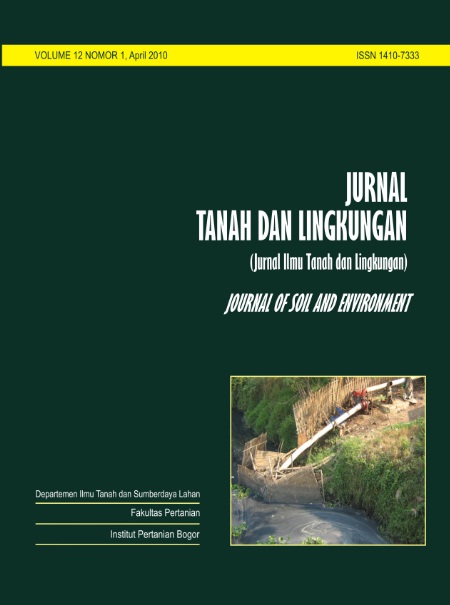PRODUKSI MASAL INOKULUM AZOTOBACTER, AZOSPIRILLUM DAN BAKTERI PELARUT FOSFAT DENGAN MENGGUNAKAN MEDIA ALTERNATIF
Abstrak
Azotobacter, Azospirillum and phosphate solubilizing bacteria are the most common microbial inoculants used as biofertilizer. To have good quality of biofertilizer, the high number of inoculant cells and suitable carriers as well as the method of carrier sterilization are among the most important factors determined the quality of biofertilizer. Related to the number of inoculant cells in carriers, the growing medium used to cultivate the microbial cells play very important role. For mass production of microbial cells, the medium should be able to support fast growth of microbial cells. The price of medium should be reasonably cheap and the materials used in medium should be available easily. The purpose of this study was to obtain a cheap growing medium that can support high number of microbial inoculant cells and the components of the medium should be easyly obtain and the price is not expensive. The study was conducted at the Department of Soil Science and Land Resources, Faculty of Agriculture, Bogor Agricultural University (IPB). The results showed that the medium IPB RI-1 was able to support the growth of 1010 cfu ml-1 Azotobacter, 108 cfu ml-1 Azospirillum and 109 cfu ml-1 Phosphate Solubilizing Bacteria. The number of bacterial cells in Nutrient Broth medium was only 108 cfu ml-1. This means that the IPB RI-1 medium was able to produce 100-fold population of Azotobacter compared to the growth of this bacterium in Nutrient Broth and Phosphate Solubilizing Bacteria was 10-fold higher than population in Nutrient Broth medium. The costs of the IPB RI-1 and IPB RI-2 were much cheaper compared to the cost of Nutrient Broth medium. The cost of medium IPB RI-1 only 3% (IDR 945) and IPB RI-2 about 2% (IDR 690) of the cost of Nutrient Broth medium (IDR 27,752) per liter medium in the year of 2010.
Keywords : Alternative media, Azotobacter, Azospirillum, Nutrient Broth, Phosphate Solubilizing Bacteria
Unduh
Departemen Ilmu Tanah dan Sumberdaya Lahan, Fakultas Pertanian, IPB University













